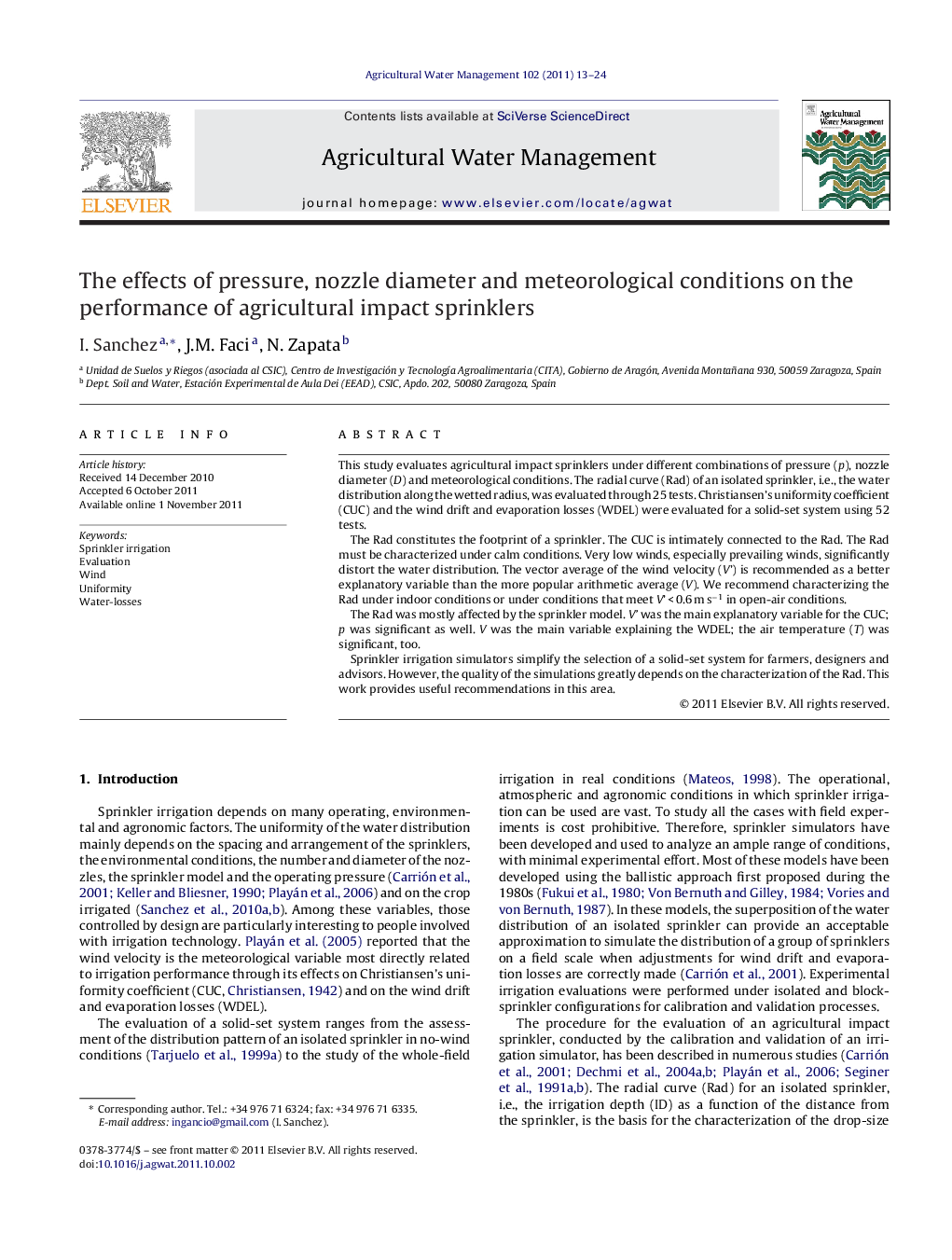| کد مقاله | کد نشریه | سال انتشار | مقاله انگلیسی | نسخه تمام متن |
|---|---|---|---|---|
| 4479237 | 1316431 | 2011 | 12 صفحه PDF | دانلود رایگان |
کلمات کلیدی
1.مقدمه
2. مواد و روش کار
3. نتایج و بحث
3-1 آزمایش آبپاش مجزا
3-2 آزمایش مجموعه آبپاش ها
4. نتیجه گیری
This study evaluates agricultural impact sprinklers under different combinations of pressure (p), nozzle diameter (D) and meteorological conditions. The radial curve (Rad) of an isolated sprinkler, i.e., the water distribution along the wetted radius, was evaluated through 25 tests. Christiansen's uniformity coefficient (CUC) and the wind drift and evaporation losses (WDEL) were evaluated for a solid-set system using 52 tests.The Rad constitutes the footprint of a sprinkler. The CUC is intimately connected to the Rad. The Rad must be characterized under calm conditions. Very low winds, especially prevailing winds, significantly distort the water distribution. The vector average of the wind velocity (V’) is recommended as a better explanatory variable than the more popular arithmetic average (V). We recommend characterizing the Rad under indoor conditions or under conditions that meet V’ < 0.6 m s−1 in open-air conditions.The Rad was mostly affected by the sprinkler model. V’ was the main explanatory variable for the CUC; p was significant as well. V was the main variable explaining the WDEL; the air temperature (T) was significant, too.Sprinkler irrigation simulators simplify the selection of a solid-set system for farmers, designers and advisors. However, the quality of the simulations greatly depends on the characterization of the Rad. This work provides useful recommendations in this area.
► We evaluate isolated impact sprinklers and solid-set systems.
► The radial curve (Rad) of a sprinkler needs excellent characterization.
► Rad must be characterized indoor or with vectorial velocity of the wind (V’) <0.6 m s−1.
► CUC relies on Rad, on V’, on the sprinklers spacing and on the pressure.
Journal: Agricultural Water Management - Volume 102, Issue 1, 15 December 2011, Pages 13–24
